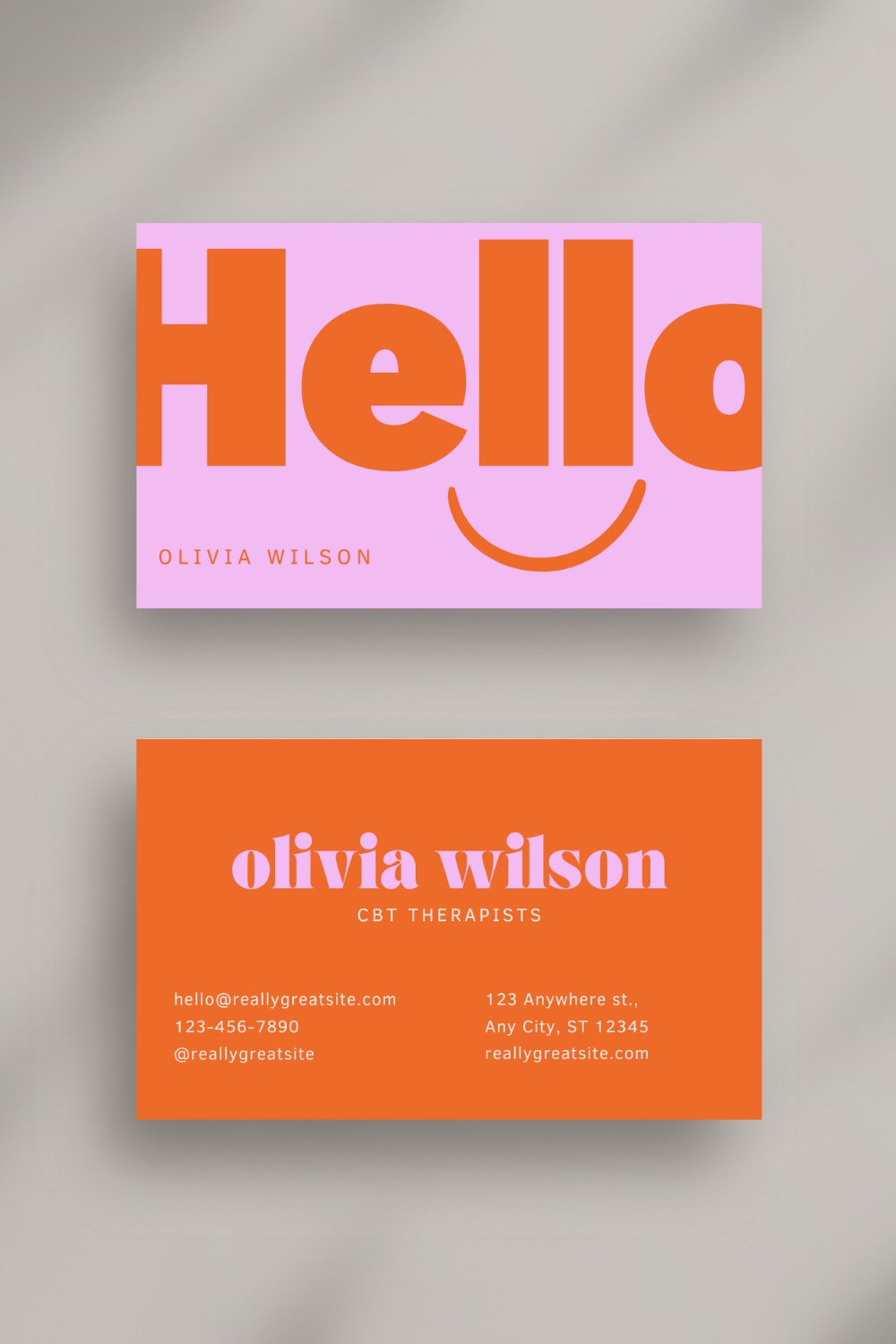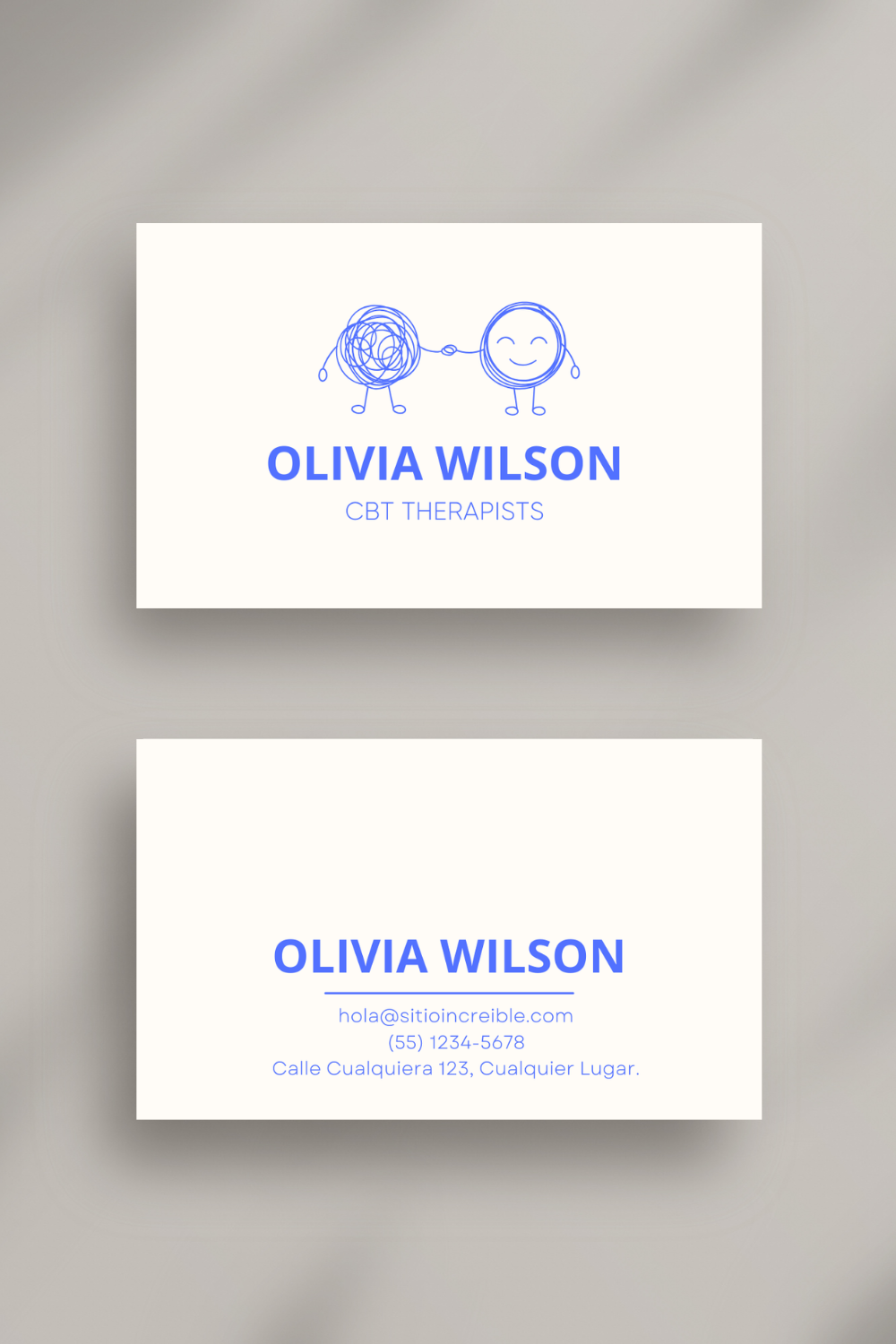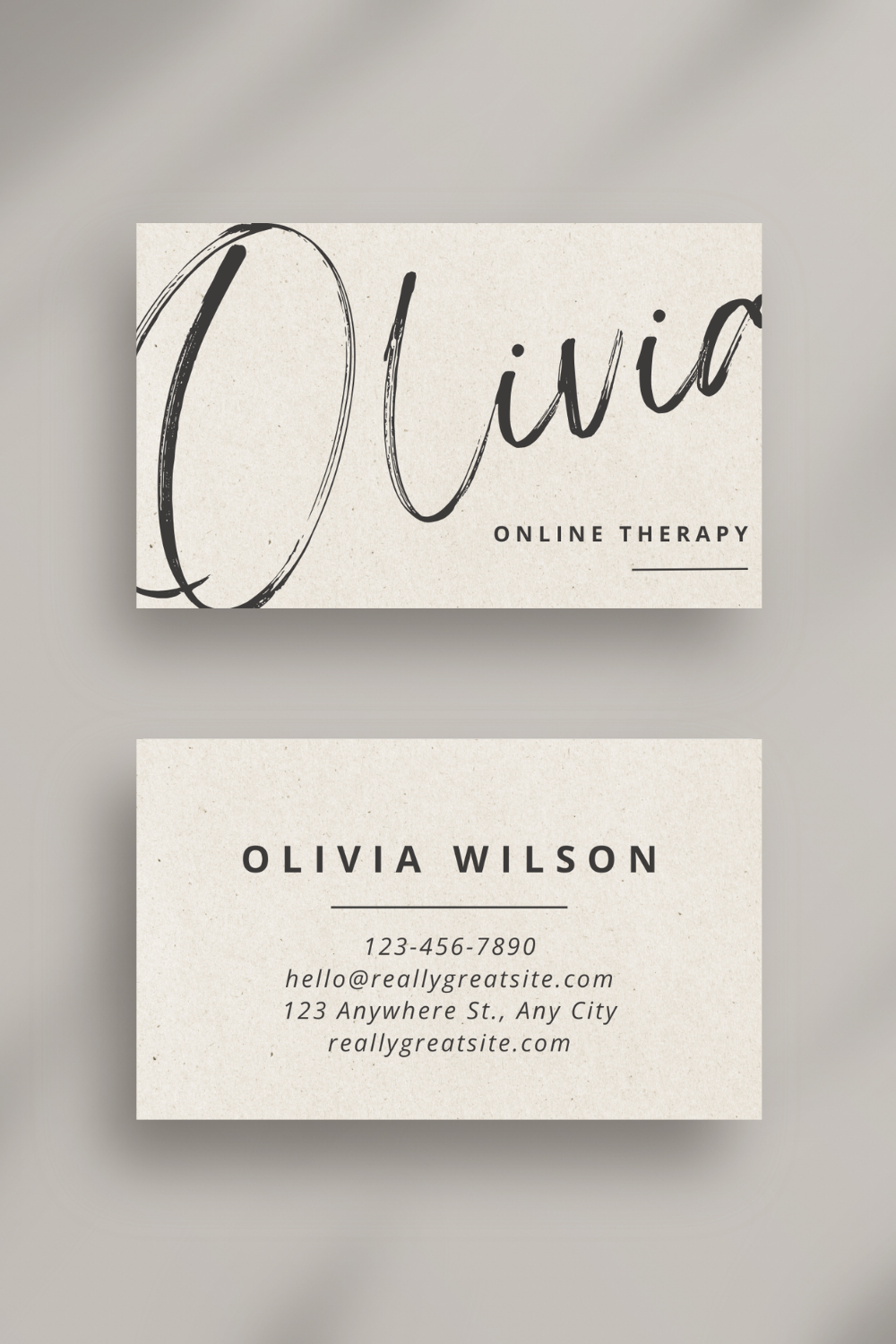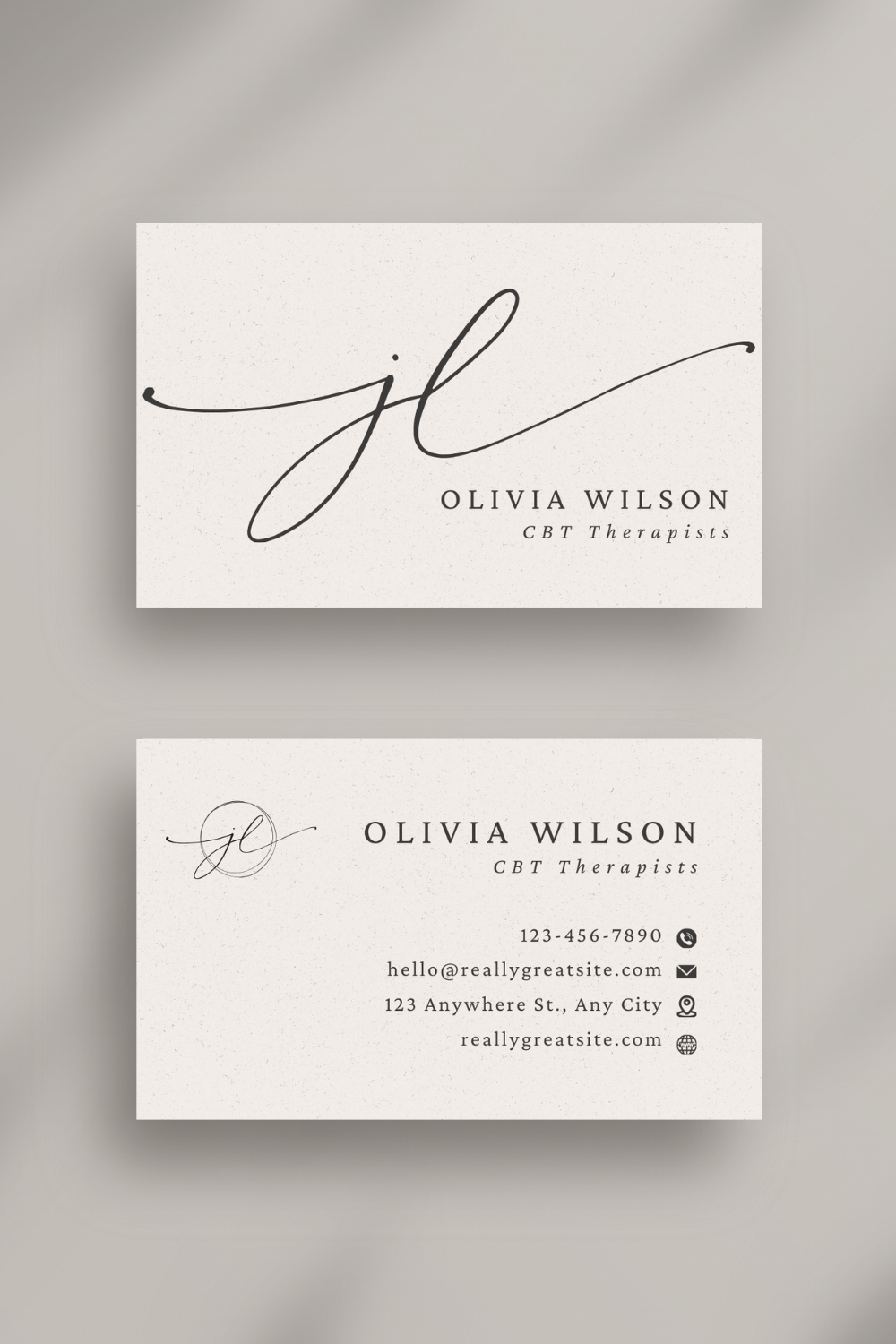10 Therapist and mental health business card design ideas
Make a lasting impression with stunning business cards
As a mental health professional, your business card is more than just a contact detail—it's a reflection of your practice and a tangible piece of your brand. A well-designed business card can leave a memorable impression and foster trust even before your first meeting. In this guide, we’ll explore how to create business cards that not only look great but also enhance your professional image and connect effectively with your digital presence.
Hi, I'm Natalia Maganda, and I specialize in helping therapists and mental health professionals like you build a powerful brand. With my expertise in web design and content strategy, I understand how every element of your brand, including your business card, plays a crucial role in creating a cohesive and impactful professional image. In this blog, I'll share practical tips and creative ideas for designing business cards that resonate with your practice and complement your online presence. Whether you're starting a new practice or looking to refresh your brand, these insights will guide you in crafting business cards that truly reflect who you are and what you offer.
Why Your business card is your secret branding weapon
Business cards might seem old-fashioned in the digital age, but they remain a powerful tool for making connections and leaving a lasting impression. For therapists, a business card is an essential part of your professional toolkit. It offers a tangible representation of your brand, making it easier for potential clients to remember and reach out to you. A thoughtfully designed business card communicates professionalism and attention to detail, which can be crucial in establishing trust with new clients.
Stand out with these unique business card design tips
Creating a memorable business card involves more than just including your contact details. Here’s how you can design a card that reflects your professional identity and stands out:
Tailor your design to reflect your therapy style
Your business card should reflect your therapeutic approach and personal style. Whether you’re a life coach focusing on empowerment or a therapist specializing in mindfulness, your card should convey your unique practice.
Choose high-quality materials for a professional feel
Invest in high-quality cardstock and printing to ensure your business card feels substantial and professional. The texture and weight of the card can enhance the impression you make on potential clients.
Incorporate your brand colors and logo
Use your brand’s colors and logo to create a cohesive look. Consistent branding helps clients recognize and remember your practice, making your card a powerful extension of your online presence.
Add a personal touch with unique elements
Consider adding unique elements such as custom illustrations or a handwritten signature. Personal touches can make your card stand out and create a memorable experience for the recipient.
Creating digital business cards: The future of networking
In addition to traditional cards, digital business cards offer a modern way to share your information and connect with clients. They are convenient, environmentally friendly, and can be easily updated. Here’s how to create one:
Apps and websites to design your digital business card
Explore these platforms to design and share your digital business card:
Canva: Design with Ease
Canva offers a user-friendly interface and customizable templates for creating digital business cards. Choose from various designs or start from scratch to fit your personal style.
Adobe: Professional and Customizable
Adobe provides professional-grade templates and design tools. Customize your card to reflect your branding and download or share it digitally.
Vistaprint: Print and Digital Options
Vistaprint not only offers printing services but also digital card creation. Use their tools to design a card that works both in print and online.
Enhance your card with a QR code
Adding a QR code to your business card can bridge the gap between physical and digital worlds. Here’s how:
Create a QR Code to Link to Your Online Profile
A QR code can direct potential clients to your website, booking page, or professional profiles. Use QR Code Generator to create and customize your code. Simply enter your URL, choose your design options, and download the code to add to your card.
10 Inspiring Business Card Ideas for Therapists
Looking for inspiration? Here are ten creative business card ideas tailored to the mental health field:
1. Minimalist and Modern
A clean, minimalist design with ample white space and a simple logo can convey professionalism and clarity.
2. Nature-Inspired Designs
Incorporate nature elements such as leaf patterns or earthy tones to promote a calming and soothing feel.
3. Soft, Pastel Colors
Use soft pastel colors to evoke tranquility and warmth, reflecting the supportive environment of your practice.
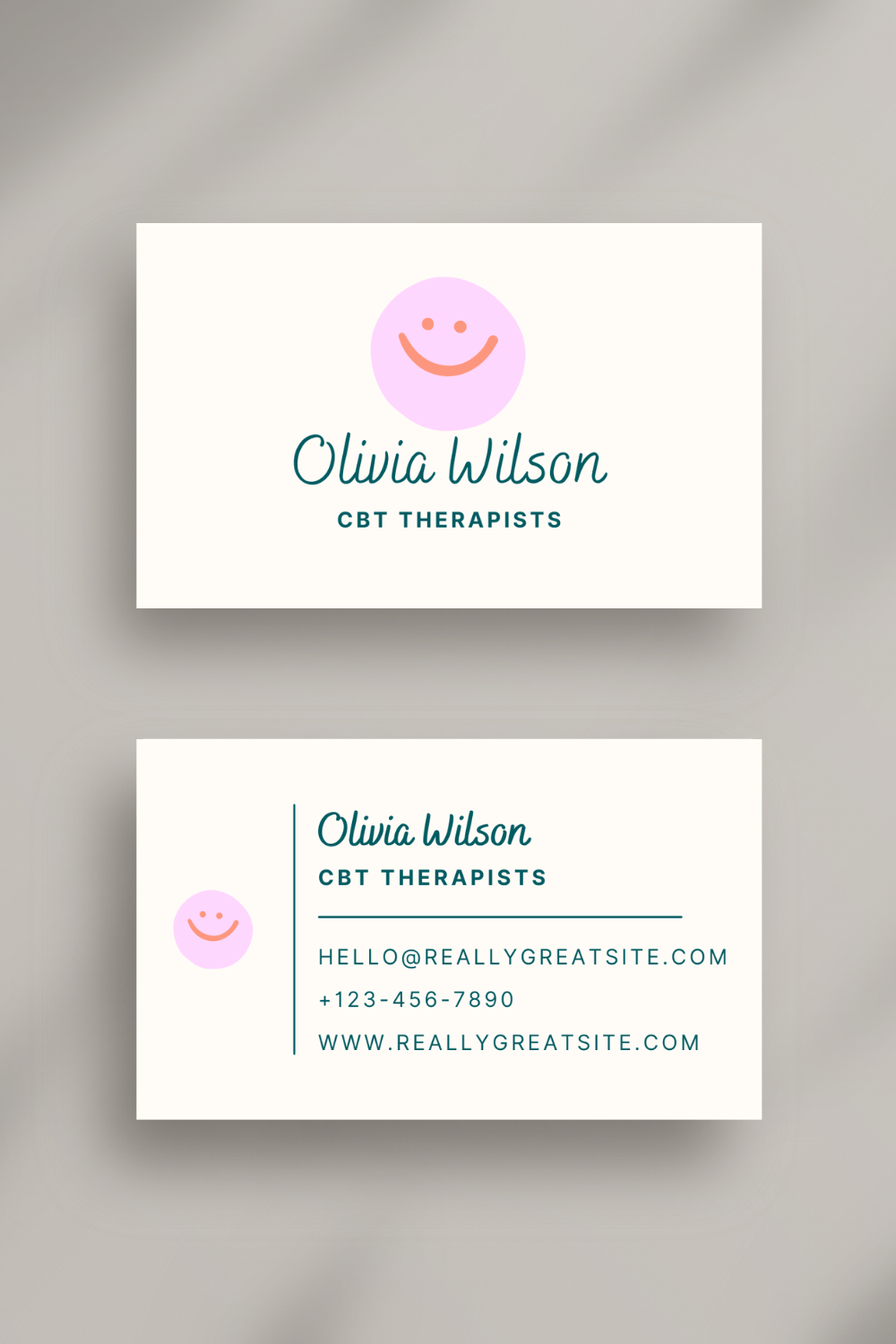
4. Interactive Cards
Design a card with interactive features, such as a fold-out section or a scratch-off area with a motivational quote.
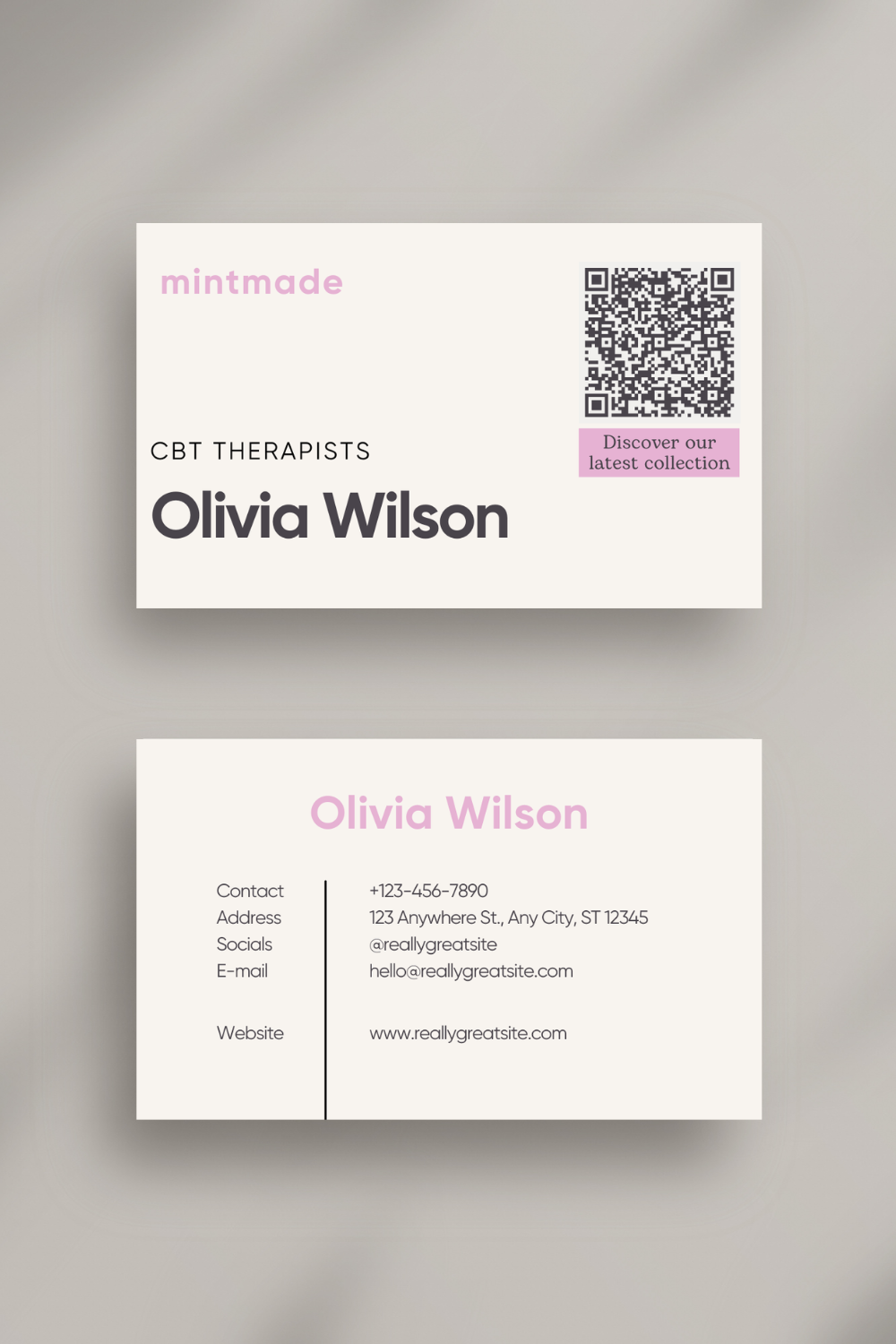
5. Unique Shapes and Formats
Experiment with unconventional shapes or formats, like rounded corners or a vertical layout, to make your card stand out.
6. Custom Illustrations
Add custom illustrations or graphics that reflect your therapeutic approach, making your card visually engaging and unique.
7. Professional Portrait
Include a professional portrait to personalize your card and create a more personal connection with potential clients.
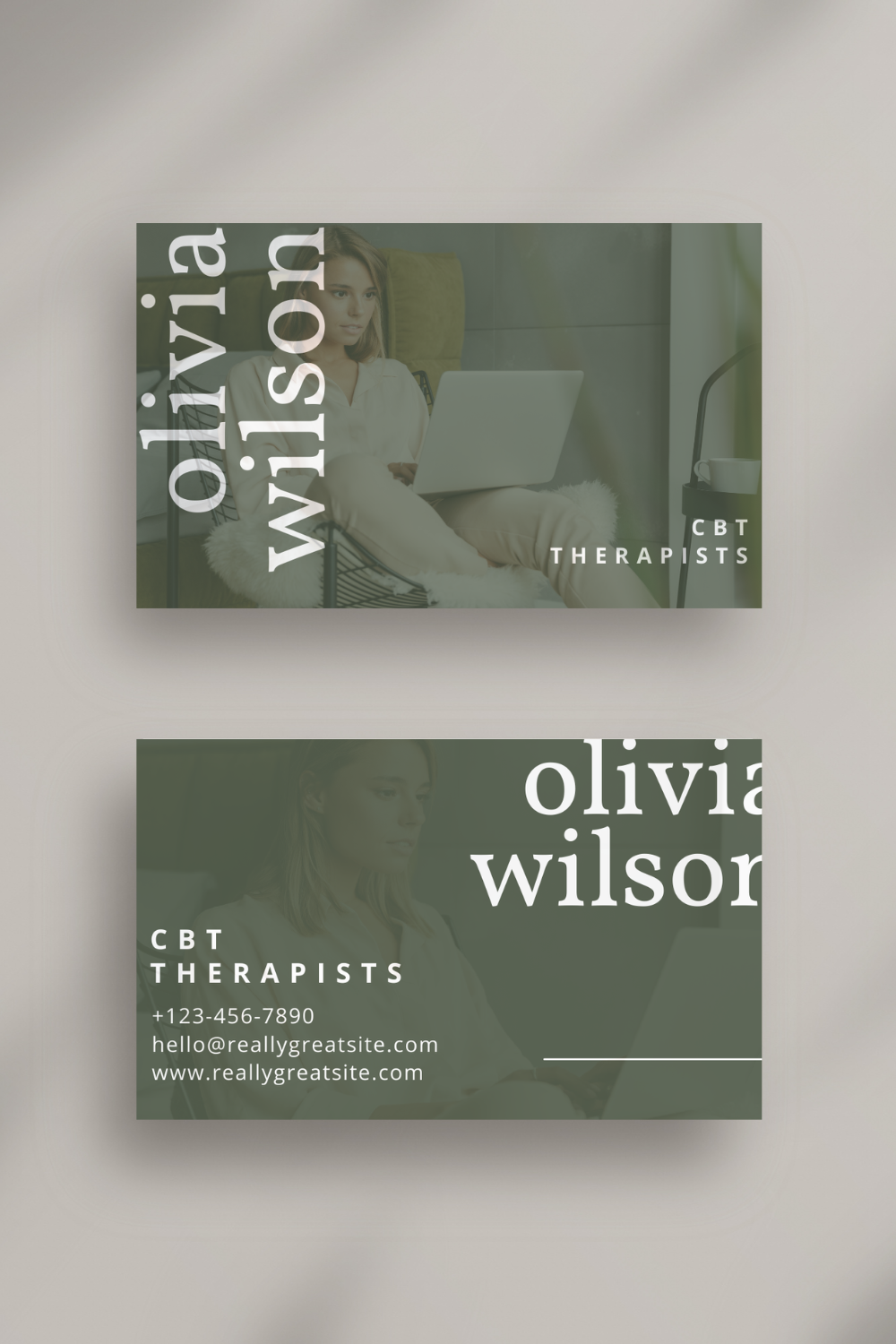
8. Informative Layout
Use your card to provide useful information, such as a brief list of services or a helpful tip related to mental health.
9. High-Impact Finishes
Enhance your card with high-impact finishes like foil stamping or embossing to create a memorable tactile experience.
10. Elegant and Classic
Opt for an elegant, classic design with refined typography and subtle color accents for a timeless look.
Elevate your brand with a professional business card and website
Your business card is more than just a contact detail—it’s an extension of your brand and a key tool in your marketing strategy. By implementing these design ideas and incorporating modern digital features, you can create a card that not only looks professional but also effectively represents your practice.
Ready to take your brand to the next level? Explore my
web design services for therapists
and download my free website planner guide to start creating a digital presence that complements your new business card. Let’s make sure every aspect of your branding shines!
Related reads:
- 40 therapist office ideas and tips for branding your calm space
- 40 Therapist headshots and photoshoot ideas
- The ultimate guide to branding your therapy and private practice
- 10 simple ways to get more therapy clients for your private practice
20 modern therapist logo ideas - How to write an engaging Psychology Today profile
- SimplePractice vs TherapyNotes in-depth comparison
- Therapist networking tips and where to find online events
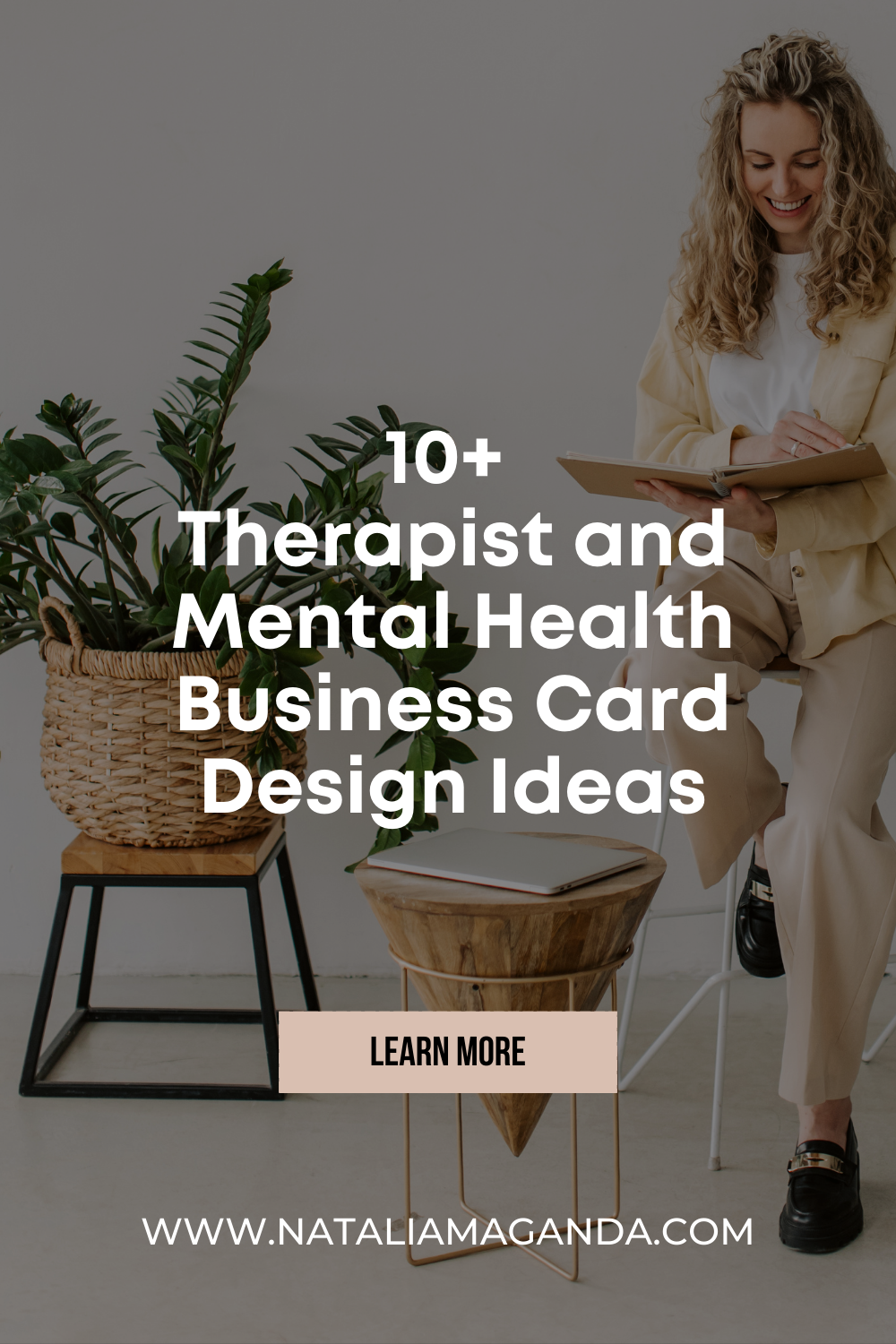
* AI Disclosure: This content may contain sections generated with AI with the purpose of providing you with condensed helpful and relevant content, however all personal opinions are 100% human made as well as the blog post structure, outline and key takeaways.
* Affiliate Disclosure: Some of the links on www.nataliamaganda.com may contain affiliate links meaning that I will get a commission for recommending products at no extra cost to you.

hello! i'm natalia
Latina, web design expert for mental health professionals.
I help ambitious life coaches, therapists and holistic leaders amplify their magic, gain visibility, and simplify their marketing efforts through strategic web design and content.









